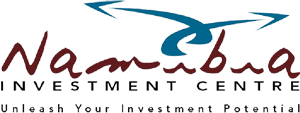South Africa occupied the German colony of South-West Africa during World War I and administered it as its mandate until after World War II, when it annexed the territory. In 1966 the South-West Africa People's Organization (SWAPO) through its People's Liberation Army of Namibia (PLAN) launched a war of independence for the area that was soon named Namibia, but it was not until 1988 that South Africa agreed to end its administration in accordance with a UN peace plan for the entire region. Namibia won its independence in 1990 and has since then been governed by the SWAPO through a semi-presidential government. Namibia is a multi-party state and elections are held every five years.
The government is divided into the Executive, the Legislative and the Judiciary organs. The Parliament, the National Council and the National Assembly are all situated in the capital of Windhoek. Dr. Sam Nujoma was elected the first president of the free Namibia, becoming both head of State and government, and led the country during its first 14 years of self-rule. In 2004 Mr. Hifikepunye Pohamba succeeded Nujoma in a landslide victory. Current president Dr. Hage Geingob was sworn in in 2015, along with Nambias first female Prime Minister Saara Kuugongelva-Amadhila.
Short Facts
| Capital | Windhoek |
| Area | 825 418 km2 |
| Population | 2,347,988 (2015 est.) |
| Languages | English (official), Oshiwambo, Herero, Afrikaans, Khoekhoe, German and others |
| Currency | Namibian Dollar (NAD) |
| Calling Code | +264 |
| Health & Education | |
| Life expectancy | 65 years (2014 est.) |
| Population growth rate | 1.9 (2014 est.) |
| Infant mortality rate (under 1 year) | 36.4 deaths/ 1.000 live births (2016 est.) |
| Fertility rate | 3.1 children born/woman (2013 est.) |
| Ability to read and write, grown up over 15 years | Male 79.2%/ Female 84.5% (2015 est.) |
| Economy | |
| Agriculture products | Millet, sorghum, peanuts, grapes, livestock, fish |
| GDP per capita | USD 5.693 (2013) |
| GDP composition by sector |
Agriculture: 6.2%, Industry: 30.0%, Services: 63.8% (2015) |
| Income frome exports, compostion by sector | 52% minerals (70% diamonds) 25% fish and fish products, 13% live animals, meat and animal products. |
| Industries | Meatpacking, fish processing, dairy products, mining; zink, tin, silver, tungsten, uranium, copper. |
| Inflation | 5.2% (2014) |
| Exports-commodities |
Diamonds, copper, gold, zink, lead, uranium, cattle, processed fish, karakul skins |
| Unemployment rate | 28.1% (2014) |
| Politics & Religion | |
| Independence Day March 21 1990 | German colony until 1914, thereafter occupied by South Africa |
| Political system | Republic, semi-presidential, multi-party system, elections are held every five years |
| Presidents | Hage Geingob (SWAPO) 2015-present, H. Pohamba (SWAPO), 2004-2015), Sam Nujoma (SWAPO), 1990-2004. |
| Prime Ministers |
Saara Kuungongelva-Amadhila (SWAPO) 2015-present, Hage Geingob (SWAPO) 2012-2015, Nahas Angula (SWAPO) 2005-2012, Theo-Ben Gurirab (SWAPO) 2002-2005, Hage Geingob (SWAPO) 1990-2002 |
| Females in the parliament | 28.3% (2014) |
| Religions | Christians 80% - 90% (at least 50% Lutheran), Indigenous beliefs 10% - 20% |


